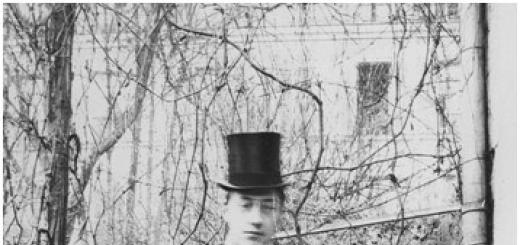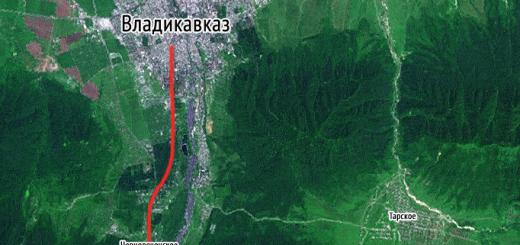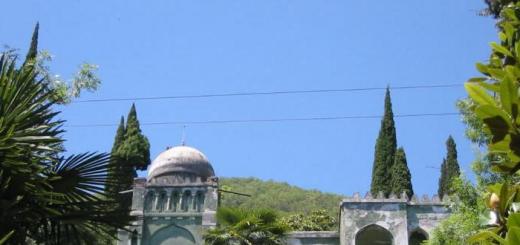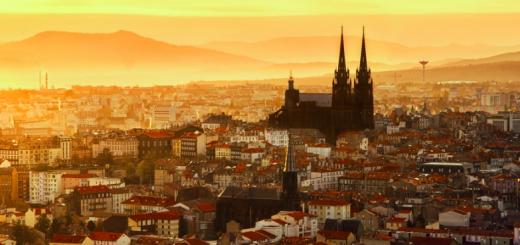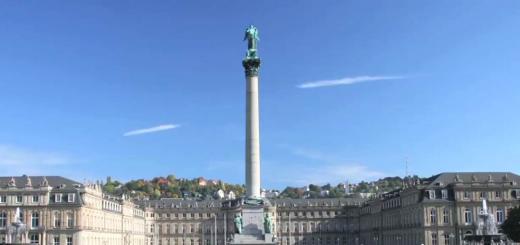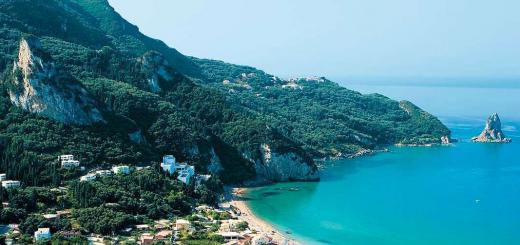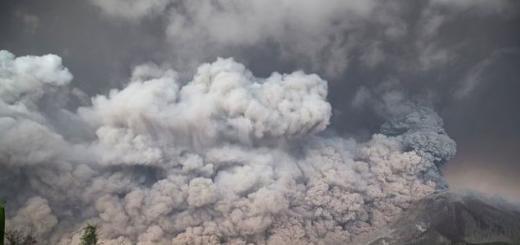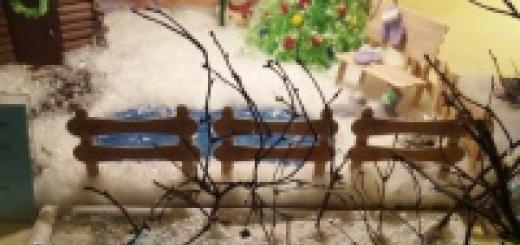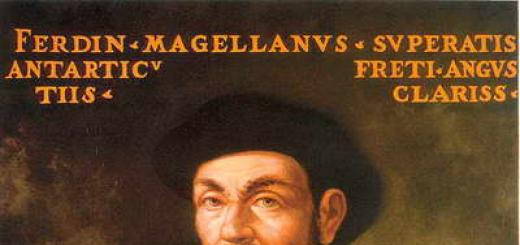Gobustan- an archaeological reserve in Azerbaijan, south of Baku, on the territory of the Karadag and Absheron regions, which is a plain located between the southeastern slope of the Greater Caucasus Range and the Caspian Sea, and part of which is a cultural landscape of rock paintings, located on the territory of 537 hectares.
The name "Gobustan" itself comes from the Azerbaijani word "gobu", which translates as "beam". Thus, Gobustan is the land of ravines and gullies.
Monuments of Gobustan are divided into two groups:
1) rock carvings;
2) ancient sites and other objects.
In 2007, the cultural landscape of Gobustan rock paintings was included in the list of UNESCO World Heritage Sites.
Geography
The territory of the reserve in 3096 hectares is a vast low-mountain area between the southeastern spurs of the Greater Caucasus and the Caspian Sea. It is crossed by ravines and dry valleys. From the north, Gobustan is bounded by the southern continuation of the Main Caucasian Range, in the west by the valley of the Pirsaatchay River, in the south by the Mishovdag and Kharami mountains, and in the east by the shores of the Caspian Sea and the Absheron Peninsula. The length from north to south is 100 km, from west to east - up to 80 km.
Here are the largest mud volcanoes in the Caucasus. The main river is the Jeyrankechmez. There are also springs and wells on Mount Boyukdash, fed by underground water from limestone deposits and atmospheric precipitation. The climate within the reserve is dry subtropical, with relatively mild winters and hot summers. Short-term spring and autumn rains are observed, after which the flora and fauna come to life.
Flora and fauna
The flora of Gobustan is typical for the vegetation of deserts and semi-deserts. It consists of herbs and shrubs, sagebrush and similar perennials. Among the heaps of stones and rocks, there are wild roses, dwarf cherries, honeysuckle, junipers, wild pears, wild rice, wild pomegranates, grapes and some other types of trees and shrubs.
Over the past decades, the fauna of Gobustan has become very poor. The natural inhabitants of Gobustan are now rare foxes, jackals, wolves, hares and wild cats, mountain partridges, wild pigeons, larks, along with numerous snakes and lizards.
Cave drawings
From year to year, tourists from all over the world visit Gobustan to see with their own eyes the works of art of our distant ancestors. The walls of the Gobustan caves are decorated with a huge number of rock paintings, where you can see not only animals, birds, reptiles, insects, fish that have lived in this area for thousands of years, but also people - the figures of men and women.
These drawings date back to the eighth millennium BC, that is, the Neolithic period.
At that time, matriarchy flourished in the tribes. These ancient people worshiped a woman, she was for them the personification of warmth, prosperity and the successor of the family. Human figures were depicted in full growth, men - in the attire of hunters, armed with bows and arrows, women are often tattooed.
The drawings show that people then were tall, slender and muscular. Of the clothes on them, only loincloths were depicted.
The famous writer and traveler Thor Heyerdahl became so interested in the rock paintings in the caves of Gobustan that he repeatedly visited these places.
Having studied various materials, in particular, how boats are depicted in the drawings in Gobustan, he compared them with the images of boats in Norway. Having found quite a lot in common, over time, people evolved and improved, and, naturally, this was reflected in their rock art. The changes affected the image technique and sizes.
When the Neolithic period was replaced by the Bronze Age, the cave paintings significantly decreased, people stopped drawing them in full size.
Stone-tambourine Gavaldash
One of the most entertaining sights of Gobustan is a tambourine stone, which the locals call "Gavaldash". It is located in the northeast, at the foot of the Jingirdag mountain.
It is interesting in that when you hit it, it makes various sounds. Moreover, you need to hit it with other stones, and depending on the size of the stone, the ringing emitted by Gavaldash will differ. According to one version, this stone was something like an alarm signal, or even just a musical instrument that helps to carry out certain rituals.
Mount Boyuk-dash
Mount Boyuk-dash is also noteworthy. At its foot in the first century AD, an inscription in Latin appeared. This is clear evidence that the Roman legions passed here at one time. This inscription looks like this:
Imp DomitianoCaesare avgGermanicL JuliusMaximusLeg XII Ful.
If we translate this into our language, we get the following phrase: "The time of the emperor Domitian Caesar Augustus of Germany, Lucius Julius Maximus, Centurion XII of the Lightning Legion."
From this we can conclude that this inscription was made by the centurion of the twelfth detachment of this particular legion, destroyed by the inhabitants of Apsheron.
Gobustan Nature Reserve in the list of UNESCO World Heritage Sites
Due to its significance for the whole world, the Gobustan Reserve was submitted in 2002 by the government of Azerbaijan for inclusion in the list of UNESCO World Heritage Sites.
Just 5 years later, in 2007, he was already included in this list of the most significant cultural and historical monuments of the world.
The Gobustan reserve and its sights began to be studied back in the distant 1939, and continue to this day.
Now Gobustan is a unique heritage of Azerbaijan with the status of a monument of world importance. It preserves the history of life, work, work and entertainment of primitive tribes.
How to behave in the reserve
If you decide to visit Gobustan, then you definitely need to remember these simple rules and follow them so as not to harm the nature and sights of the reserve.
- Do not pick mushrooms, berries, plants, flowers. It is better to leave everything as it is - in its original form.
- As souvenirs, you can take out only photographs of the surrounding beauties.
- Don't litter! Be sure to take all rubbish with you. Otherwise, the purity of the reserve will be in jeopardy.
- You can not leave any inscriptions on the walls of caves, rocks, even on signs.
The Gobustan reserve spread over a vast territory and tourist routes for citizens of the whole world have been laid through this territory.
Reserve address
The city of Baku, the territory of the Karadag region, the southeast of the Gobustan massif of the Greater Caucasus.
Early in the morning we went to Gobustan to look at rock paintings and mud volcanoes.
You can get to the bus station, from where the bus goes to Gobustan (or rather, to the nearest settlement to Gobustan), by minibus No. 29 from January 20 Street for 40 kopecks. At the bus station they asked for a bus to Gobustan, which, despite the schedule, leaves as soon as it is full. Vendors came on the buses and sold all sorts of crap - pies, drinks, crossword puzzles. We drove less than an hour, a taxi was immediately met at the bus. There are no other ways to get to the sights. The taxi driver asked for 45 manats, bargained for 25 (we are naive, of course). Do not expect to hitchhike to the volcanoes, there is no road there, no one goes there, only tourists (although we did not meet anyone at all along the way). And on foot to stomp in the heat for 2 hours for sure.

There used to be “dangerous” signs around the volcanoes, but the taxi drivers pulled them out (ours boasted), which is why tourists should be scared. In fact, no matter how small and harmless they may seem, you cannot approach the craters - you can fall through, people really drowned. 

Average volcano size: 

Dirt, where it has not dried up, actively gurgles, in winter, they say, in general, hoo. 
Near the volcanoes there is also a mud lake, it has a rope stretched for folk fun: you tie the rope to your belt so as not to drown, and climb into the lake to swim. They say it doesn't always work. The lake, in confirmation of its own danger, also gurgles. 
In general, I liked it very much, but I didn’t want to go yet. Then we went to Gobustan itself, which contains evidence of the life of people of the Stone Age and subsequent periods - parking lots and rock paintings - petroglyphs (about 6000!). Thor Heyerdahl, by the way, came to the conclusion that the drawings are strikingly reminiscent of Norwegian petroglyphs, which means that Scandinavians and Azerbaijanis are brothers! It is doubtful. But the drawings are really amazing. The simplest, of course, but how, how were they drawn so evenly on a rock? We can't do that with a pencil. It is also very interesting to look at the rocks in search of drawings. The taxi driver says every time he finds something new. By the way, the reserve has an excellent museum, a completely new one, which tells a lot about drawings and about this place in general, including mud volcanoes. Photos, of course, do not convey these images well, many drawings are quite large. 


Gavaldash is a huge tambourine stone that can be played with other small stones:
The taxi driver offered to take me to the beach for a swim, they say, all inclusive, but it was really hot. Do not be fooled, the sea is very dirty, the beach is littered with bottles and other garbage.
The taxi driver, by the way, is a goat, although, rather, we are suckers. We thought, what a good one, we’ll give 30 manats instead of 25. At the same time, we only had 40 with two pieces of paper, he happily gave five change and said that there was no more change. After that, he disappeared, and we remained at the bus stop, where he picked us up, flapping our ears. It will be science. By the way, we screwed up this way for the first and last time for this vacation. Photo of a taxi driver, don't take it for us! 
On the 195 minibus for 80 kopecks we reached January 20, and from there on the 120 bus to the railway. And again, on the advice of Lonely Planet (do not trust their advice!) We went to the QOC cafe on May 28, 50. Nobody spoke our languages, only shook their heads. There is little food, the barbecue turned out to be on the bones and not that very tasty. We caught up with fruit for 1.5 manats, which we ate in a nearby park. We walked a little more towards the old city to say goodbye to Baku. 

We took things from the storage room and calmly headed for the train: we had a night trip to Sheki. This is where an unpleasant surprise awaited us ... What a day like this! We bought tickets in advance on the website of the Azerbaijani Railways. It was written in the rules that for local trains it is necessary to fill out forms in Azerbaijani, for international trains - in Russian. But, sorry, where can I find the Azerbaijani layout, not to mention the Azerbaijani spelling of the surname. Well, they wrote in Russian, and, as stated in the rules, they came with an electronic form to the cashier an hour before departure. The ticket has been printed. Everything is fine. But when boarding the train directly, it turned out that our names were printed out in abracadabra: something with fonts or encoding. We checked the dates and times, but didn't look at the last name. The head of the train immediately showed up, who, looking at the tickets, immediately announced that he would not let us in, like you would go tomorrow. To all the assurances that we had nothing to do with it, and that here are our passport numbers, which coincide with those on the tickets, he shook his head and spoke in a language that was not our native language. Meanwhile, a crowd of conductors, police, railroad workers and sympathizers had gathered. They said something, called, looked at the passport, but they let me in anyway. 
The trains are old and stuffy, but the conductors are good. And the toilet was opened, and the garbage was removed by themselves. The company in the compartment was also good: a Russian Azerbaijani woman with her son. She talked about the Soviet Union for a long time and with nostalgia, but she did not particularly complain about modern life either. She said that there are Russian schools, universities have both Russian and Azerbaijani programs, fifty-fifty. After chatting, we went to the beds. It was a night on the train, and in the morning we arrived at .
Gobustan is an archaeological reserve located along the E112 highway, 60 km south of Baku. For convenience, we will immediately separate the interactive museum and the rocks themselves with images from mud volcanoes, since these sights are located at a distance of about 13 km from each other. Yes, and someone may be interested in drawings of the ancient inhabitants of these places, while others only volcanoes, or vice versa. But, if you still decide to visit Gobustan, I recommend visiting both there and there.
Rock paintings in Gobustan
The museum complex of rock paintings, located 4.5 kilometers from the Gobustan bus stop, includes a small two-story interactive petroglyph museum, opened at the end of 2011, and the rocks themselves with images, located on a hill 2 km from the museum. The cost of the entrance ticket is 2 manats plus 1, you or the driver will have to pay for parking, as agreed. Be careful, tickets are checked both at the bottom and at the top.
A common line runs through the entire composition of the exhibition - the connection between rock paintings and the life of an ancient person. The museum provides information not only about the petroglyphs found on the rocks in Gobustan, but also about other similar historical monuments around the world. The exhibition should appeal to children, for them there are several interactive stands, for example, on one you need to guess what kind of animal is depicted in one or another drawing of an ancient person.

After you go around all the halls and remember the drawings depicted on the local rocks, you can go upstairs. Here you will have a short half-kilometer walk with the task of finding petroglyphs and admiring the rocks, the steppe and the sea. Also pay attention to white stones with recesses, one is located at the end of the route (go along the rocks and go to the cliff), the other is already on the way back, this is gavaldash - “tambourine stone”, when struck, sounds similar to the sound drum.




In 2007, the cultural landscape of Gobustan rock paintings was included in the UNESCO World Cultural Heritage List.
Mud volcanoes of Gobustan
Mud volcanoes are located 13 kilometers from the petroglyph museum. The road to them by car takes about 25-30 minutes, since most of it falls on a broken primer, so in rainy weather you probably shouldn’t go there. When you drive up a hill, on which small hills rise here and there, you get the feeling that you are on some other planet, but definitely not on Earth. The view is mesmerizing. You walk between small mounds, and then on one side, then on the other, a “bulk-gurgle” is constantly heard and a little dirt escapes from the nozzle, which then flows down. In general, rather than paint, it is better to look.





In addition to photos, I also shot a short video with mud volcanoes.
How to get from Baku to Gobustan
Most likely, every Baku hotel offers excursions around Baku and its environs. Mine was no exception, the cost of an excursion to Gobustan in 2016 was 50 manats, but the price did not include visiting mud volcanoes, and there was no information about the number of people in the group and the vehicle. Now an individual excursion with a licensed guide to Gobustan with a visit to both attractions can be order in advance online. I myself didn’t consider the option of an organized excursion, because I wanted to get at least to the village on my own, and then choose a taxi and hit the road, but I’ll tell you what came of it and what didn’t.
Web searches for the query “how to get to Gobustan” gave outdated information about bus number 20, which you need to take on Neftchilar Avenue and go to the stop where you can transfer to route 195, which will already take you to your destination. But now, after the modernization of the Baku bus system and the launch of BakuBus, this route does not exist. Therefore, in order to get from Baku to Gobustan on your own at the moment, you need to take bus 5 (following Neftchilar Avenue) or bus 6 towards 20 Sahə and get to the final stop and transfer to bus 195 there, which will take you to Gabustan, where many taxi drivers will be waiting for you, willing to show you both the petroglyph museum and the mud volcanoes.

And now a little from personal experience. Bus 195 from bus circle 20 Sahə 100% goes to Gobustan - this is the penultimate village along its route. You should not clarify this information with the conductor or driver, otherwise it may happen, as with me, the driver will first offer the services of a trusted taxi driver, and if you refuse (I argued that there will be many offers on the spot, I’ll figure it out), then he can just stop at the entrance to the village at the crossroads, where the museum will be visible in the distance, and, pointing to it, it is strongly recommended to get out here, where a lone taxi driver is waiting, who will definitely take you. Only now it’s already impossible to bargain with him normally, because he is completely alone. In my case, this story was supplemented by the fact that the taxi driver, a young guy, did not speak Russian at all, but here by chance, lo and behold, there was a man who knew the language well and helped us establish contact, although he assured that they did not know each other. And of course, we then threw this stranger to the central stop of Gobustan, where I was supposed to get by bus. Initially, counting on 15-20 manats, a taxi cost me 25 + 1 for parking at the museum. The fare on the bus 20 Sahə - Qobustan is 80 qepiks.
The Gobustan Reserve or the Gobustan State Historical and Artistic Reserve is an archaeological reserve in Azerbaijan, south of Baku, on the territory of the Karadag and Absheron regions.
The name "Gobustan" means "land of ravines". It is a plain located between the southeastern slope of the Greater Caucasus Range and the Caspian Sea, part of which is a cultural landscape of rock paintings, located on an area of 537 hectares.
The territory of the reserve in 3096 hectares is a vast low-mountain area between the southeastern spurs of the Greater Caucasus and the Caspian Sea. It is crossed by ravines and dry valleys. From the north, Gobustan is bounded by the southern continuation of the Main Caucasian Range, in the west by the valley of the Pirsaatchay River, in the south by the Mishovdag and Kharami mountains, and in the east by the shores of the Caspian Sea and the Absheron Peninsula. The length from north to south is 100 km, from west to east - up to 80 km. Here are the largest mud volcanoes in the Caucasus. The main river is the Jeyrankechmez. There are also springs and wells on Mount Boyukdash, fed by underground water from limestone deposits and atmospheric precipitation.
The flora of Gobustan is typical for the vegetation of deserts and semi-deserts. It consists of herbs and shrubs, sagebrush and similar perennials. Among the heaps of stones and rocks, there are wild roses, dwarf cherries, honeysuckle, junipers, wild pears, wild rice, wild pomegranates, grapes and some other types of trees and shrubs. Over the past decades, the fauna of Gobustan has become very poor. The natural inhabitants of Gobustan are now rare foxes, jackals, wolves, hares and wild cats, mountain partridges, wild pigeons, larks, along with numerous snakes and lizards.
In the mountains of Gobustan under the names of Boyukdash, Kichikdash, Jingirdag, Shongardag and Shykhgaya, evidence of the inhabitants of the region of the Stone Age and subsequent periods is concentrated - rock carvings, human settlement, tombstones, etc. The first archaeological excavations carried out here began in the 30s of the 20th century, when Iskhak Jafarzade discovered 3,500 rock carvings, pits, caves and other historically significant objects in Gobustan. In 1965, 300 new rock carvings, more than 20 dwellings and 40 kurgan burials were found. There are also remains of a large prehistoric cromlech that can be clearly seen. The drawings were found on three sections of the rocky plateau, and once inhabited caves, traces of settlements and tombs discovered here indicate that the area was densely populated between the Upper Paleolithic and the Middle Ages. Now there are about 6,000 drawings that were created from the Mesolithic to the Middle Ages. Petroglyphs are carved and scratched on the rocks. They can be seen on the territory of several neighboring mountains. There are also around the semicircular, largest mountain - Kyanizadag - a mud volcano.
In 2007, the cultural landscape of Gobustan rock paintings was included in the list of UNESCO World Heritage Sites.
Or otherwise Gobustan State Historical and Artistic Reserve called the archaeological reserve of Azerbaijan, stretching across the territories of the Absheron and Karadag regions in the south of Baku.
Gobustan is a plain stretching between the Caspian Sea and the southeastern side of the Greater Caucasus Range.
The name "Gobustan" itself comes from the Azerbaijani word "gobu", which translates as "beam". Thus, Gobustan is the land of ravines and gullies.
 The Gobustan reserve is known for its rock art, which has been preserved here since the Mesolithic period.
The Gobustan reserve is known for its rock art, which has been preserved here since the Mesolithic period.
From year to year, tourists from all over the world visit Gobustan to see with their own eyes these diverse works of art of our distant ancestors.
 The creativity of primitive artists, the site of ancient people, prehistoric tombstones and much more can be seen in the mountains of Gobustan. All these testimonies of the life of the Azerbaijani people of the Stone Age are the great pride of modern Azerbaijan.
The creativity of primitive artists, the site of ancient people, prehistoric tombstones and much more can be seen in the mountains of Gobustan. All these testimonies of the life of the Azerbaijani people of the Stone Age are the great pride of modern Azerbaijan. 
rock art
The so-called petroglyphs, which are carved on the walls of caves and rocks, are certainly the most significant local exhibits.
This ancient writing is able to tell modern people about how our distant ancestors lived, how they thought, how they ran the household, what they valued, what they respected, and what they feared.
 Moreover, the walls of the Gobustan caves are decorated with a huge number of rock paintings, on which you can see not only animals, birds, reptiles, insects, fish that have lived in this area for thousands of years, but also people - figures of men and women.
Moreover, the walls of the Gobustan caves are decorated with a huge number of rock paintings, on which you can see not only animals, birds, reptiles, insects, fish that have lived in this area for thousands of years, but also people - figures of men and women.
 These drawings date back to the eighth millennium BC, that is, the Neolithic period.
These drawings date back to the eighth millennium BC, that is, the Neolithic period.
At that time, matriarchy flourished in the tribes. These ancient people worshiped a woman, she was for them the personification of warmth, prosperity and the successor of the family. Human figures were depicted in full growth, men - in the attire of hunters, armed with bows and arrows, women are often tattooed.
The drawings show that people then were tall, slender and muscular. Of the clothes on them, only loincloths were depicted.
 The famous writer and traveler Thor Heyerdahl became so interested in the rock paintings in the caves of Gobustan that he repeatedly visited these places.
The famous writer and traveler Thor Heyerdahl became so interested in the rock paintings in the caves of Gobustan that he repeatedly visited these places.
Having studied various materials, in particular, how boats are depicted in the drawings in Gobustan, he compared them with the images of boats in Norway. Finding quite a lot in common, he suggested that the ancestors of the Vikings moved to Scandinavia from here, from the Caspian Sea.
 Over time, people evolved and improved, and, naturally, this was reflected in their rock art. The changes affected the image technique and sizes.
Over time, people evolved and improved, and, naturally, this was reflected in their rock art. The changes affected the image technique and sizes.
When the Neolithic period was replaced by the Bronze Age, the cave paintings significantly decreased, people stopped drawing them in full size.
 One of the most entertaining sights of Gobustan is a tambourine stone, which the locals call "Gavaldash". It is located in the northeast, at the foot of the Jingirdag mountain.
One of the most entertaining sights of Gobustan is a tambourine stone, which the locals call "Gavaldash". It is located in the northeast, at the foot of the Jingirdag mountain.
It is interesting in that when you hit it, it makes various sounds. Moreover, you need to hit it with other stones, and depending on the size of the stone, the ringing emitted by Gavaldash will differ. According to one version, this stone was something like an alarm signal, or even just a musical instrument that helps to carry out certain rituals.

Mount Boyuk-dash
Mount Boyuk-dash is also noteworthy. At its foot in the first century AD, an inscription in Latin appeared. This is clear evidence that the Roman legions passed here at one time. This inscription looks like this:
Imp Domitiano
Caesare avg
Germanic
L Julius
Maximus
Leg XII Ful.
If we translate this into our language, we get the following phrase: "The time of the emperor Domitian Caesar Augustus of Germany, Lucius Julius Maximus, Centurion XII of the Lightning Legion."
 If we turn to Eutropius, an author who lived in the fourth century AD, we can find out that the emperor Domitian was destroyed along with his entire legion during one of his four campaigns.
If we turn to Eutropius, an author who lived in the fourth century AD, we can find out that the emperor Domitian was destroyed along with his entire legion during one of his four campaigns.
From this we can conclude that this inscription was made by the centurion of the twelfth detachment of this particular legion, destroyed by the inhabitants of Apsheron. 
Gobustan Nature Reserve in the list of UNESCO World Heritage Sites
Due to its significance for the whole world, the Gobustan Reserve was submitted in 2002 by the government of Azerbaijan for inclusion in the list of UNESCO World Heritage Sites.
Just 5 years later, in 2007, he was already included in this list of the most significant cultural and historical monuments of the world.
 The Gobustan reserve and its sights began to be studied back in the distant 1939, and continue to this day.
The Gobustan reserve and its sights began to be studied back in the distant 1939, and continue to this day.
Now Gobustan is a unique heritage of Azerbaijan with the status of a monument of world importance. It preserves the history of life, work, work and entertainment of primitive tribes.

How to behave in the reserve:
If you decide to visit Gobustan, then you definitely need to remember these simple rules and follow them so as not to harm the nature and sights of the reserve.
- Do not pick mushrooms, berries, plants, flowers. It is better to leave everything as it is - in its original form.
- As souvenirs, you can take out only photographs of the surrounding beauties.
- Don't litter! Be sure to take all rubbish with you. Otherwise, the purity of the reserve will be in jeopardy.
- You can not leave any inscriptions on the walls of caves, rocks, even on signs.
The Gobustan reserve spread over a vast territory and tourist routes for citizens of the whole world have been laid through this territory.

Where is the Gobustan nature reserve
Gobustan is located at:
The city of Baku, the territory of the Karadag region, the southeast of the Gobustan massif of the Greater Caucasus. Lermontov kuc. 3, Baku, AZ1006

